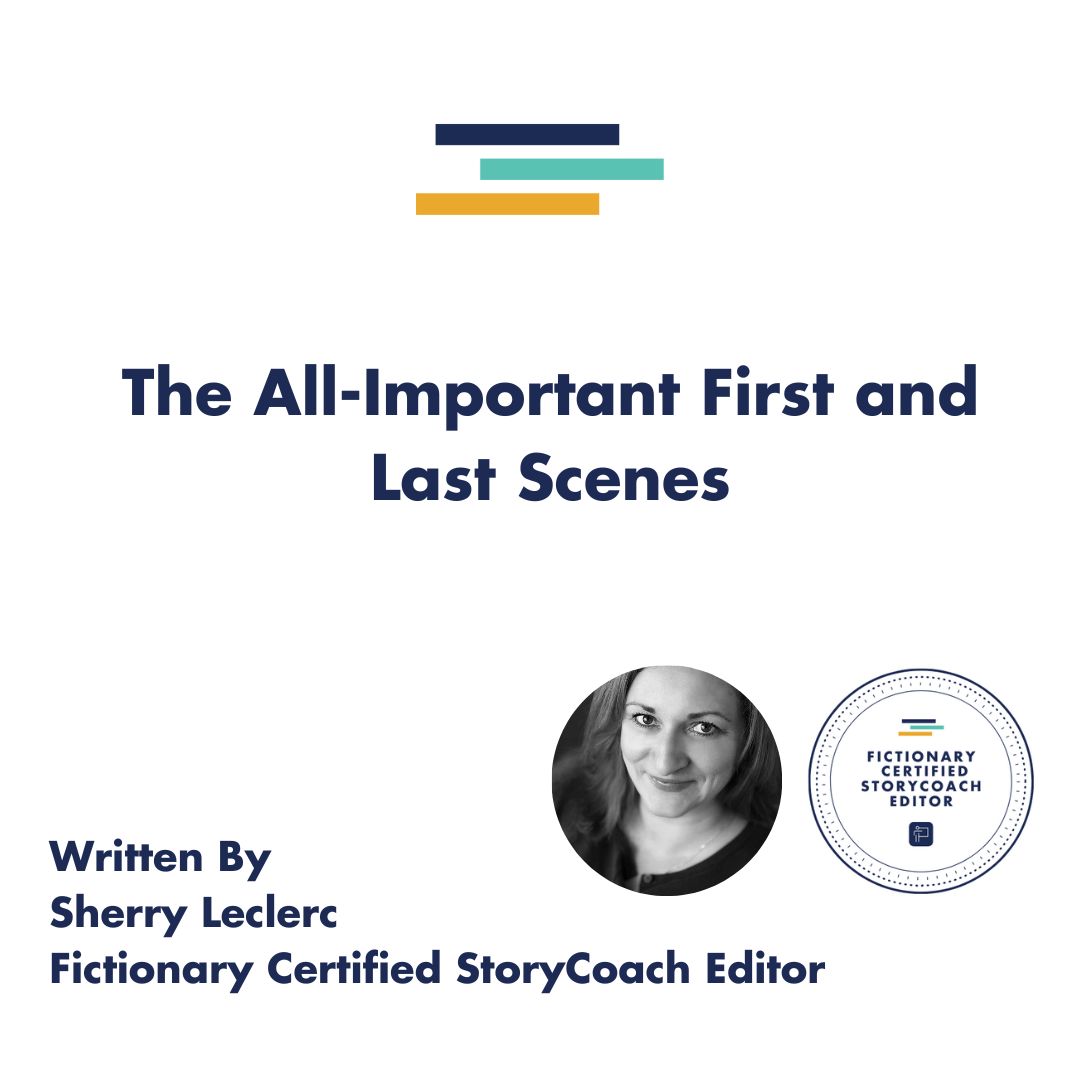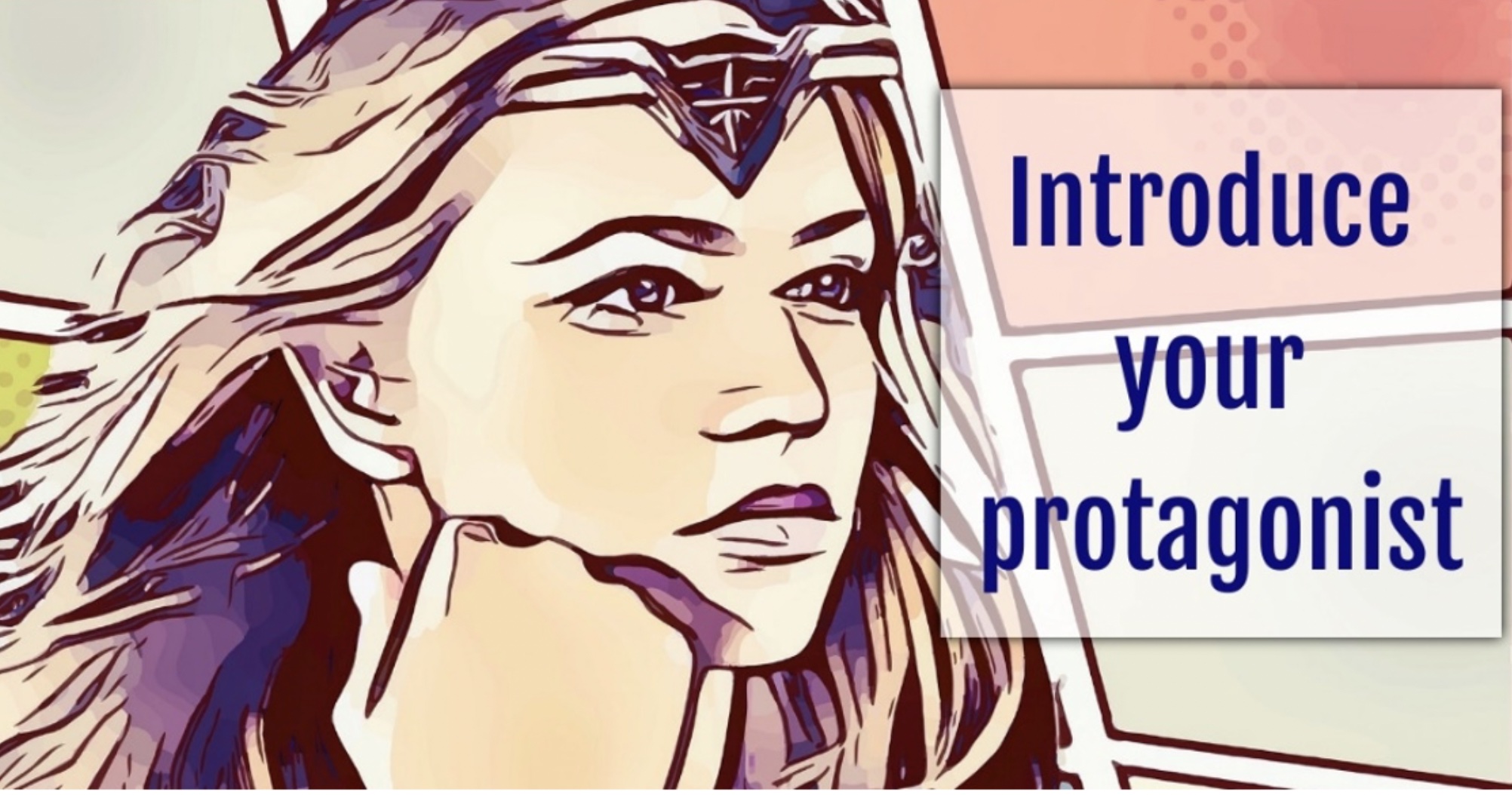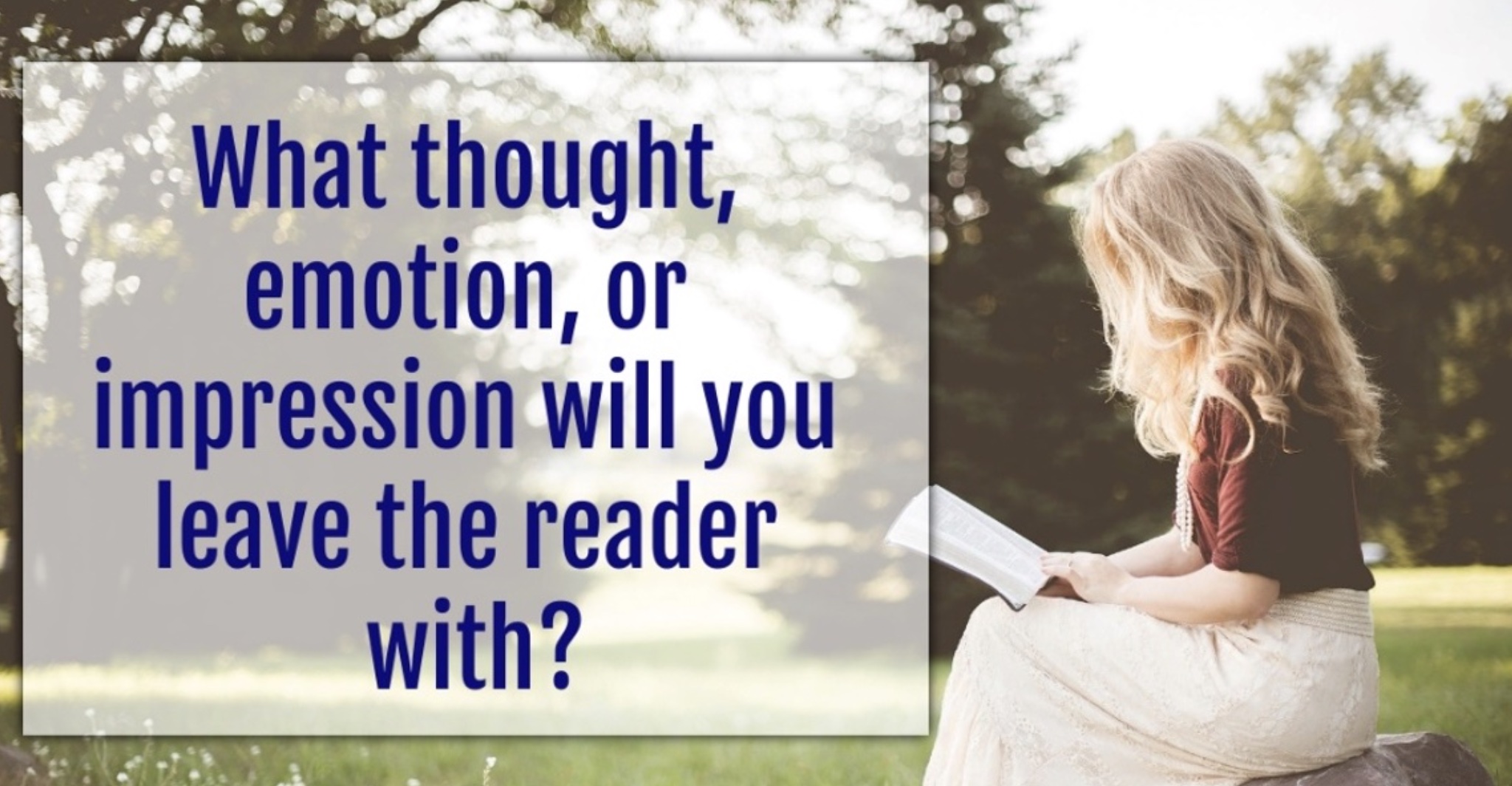
Beginnings and endings can make or break a story, and this is true whether we’re referring to the workings of the scenes within the novel (see 6 Ways to Exit a Scene and Keep Your Reader Reading), or to the first and last scenes of the novel.
Before we talk about how to craft first and last scenes that work, it’s important to make sure you have a good understanding of what a scene is and what it should include. If you aren’t certain, then it’s a good idea to pause for a moment to read the articles, What is a Scene in a Novel and does the Genre Matter?, by S.W. Millar and Story Editing: Word Count Per Scene and Plot by Kristina Stanley.
What to Do in the First Scene of Your Novel
The beginning of any story has many jobs to do and getting these right will set the stage for what is to come and help ground your readers in your story.
These are what I see as the top 3 things to do in the first scene of your novel:
- Introduce your protagonist: The first character your readers should meet in Chapter 1 is your protagonist. Readers will expect this to be the case, and they will (hopefully) emotionally identify with this character. Beginning a story with a point-of-view character who is not the protagonist can feel like trickery: Readers may become invested in this character by the time they figure out it isn’t the protagonist and feel like their time has been wasted. Also, introduce or foreshadow the story problem (story goal) that the protagonist will set out to resolve.

- Introduce your story world: Grounding your readers in the setting as soon as possible can help you to draw them into your story from the very beginning. You want to show the protagonist in their “ordinary world,” so that the reader can see what the protagonist stands to lose. It also provides an opening image against which they can gauge how the protagonist’s world (or their outlook on that world) changes by the end.

- Start with an active scene: There are two kinds of scenes in any story. In Fictionary’s StoryTeller software, they are referred to as Action or Sequel. I have also heard them called Scene and Sequel, which can be confusing as they are both types of scenes. In the blog article How Do You Know When To Start and End a Scene? author Randy Ingermanson refers to them as “proactive scenes” and “reactive scenes.”Ingermanson’s terms are good descriptors of what these types of scenes do.
In action/scene/proactive scenes, something is happening and the characters are actively pursuing a goal. In the sequel/reactive scenes, the characters react to what has happened in those active scenes and decide on what to do next. Make your opening scene active.You may have already heard the oft-given advice to begin your story in medias res, which is Latin for “in the midst of things.” A main reason for this is to draw your readers into your story from the get-go and pulling them right into the action is a good way to do this.

What NOT To Do in The First Scenes of Your Novel
Here are my top 2 “do not do’s” for the first scenes of a story:
- Do not “info dump”: In other words, do not give too much backstory all at once. As a writer, you need to know your characters and your story world inside and out, but readers don’t need that much information, especially right at the beginning. In your first scenes, give enough information for readers to understand what is happening and to set the stage for what is to come. Other important backstory can be drip-fed into the narrative at appropriate times through dialogue, the POV character’s internal monologue, and so on.

2. Do not drown your readers in description: This is where the artistry of writing comes in. You need to give enough description of your characters—your protagonist in particular—for your readers to begin to understand and empathize with them. You need to give enough details about the setting to immerse your reader in the story world. But you do not want to give so much description all at once that the reader just skims over it or, worse, gets bored and puts the book down.
What to Do in the Last Scenes of Your Novel
If you want the readers of your novel to become fans, you need to ensure you end your story in a compelling and satisfying way. Here are my top 3 things to do to help you do that:
- Tie up the major plotline of the story: There are many ways to end a story, and it is okay to leave questions for your readers to ponder (like in ambiguous endings). But you should ensure the major plotline is resolved, and it’s even better if you can do that in a surprising or unexpected way.
You generally do not want to end your story with a cliffhanger, especially in stand-alone novels. When it comes to series, readers tend to be more a little more forgiving of a cliffhanger, but they usually aren’t happy about it. Instead, you can have a main plotline that gets resolved for each book, and you can either add elements in the resolution that foreshadow the next book or have an overarching plotline that will be resolved by the end of the series.
 One good and very clear example of the latter is in the Harry Potter series by J.K. Rowling. In the first book of the series, Harry discovers that Professor Quirrel is the bad guy (surprise!) and defeats him in the climax. Yet the series goal—defeat Voldemort—is not resolved. Any unanswered questions in this book are explained in the final scenes when Harry talks with his friends and Dumbledor, ensuring no plot holes are left behind.
One good and very clear example of the latter is in the Harry Potter series by J.K. Rowling. In the first book of the series, Harry discovers that Professor Quirrel is the bad guy (surprise!) and defeats him in the climax. Yet the series goal—defeat Voldemort—is not resolved. Any unanswered questions in this book are explained in the final scenes when Harry talks with his friends and Dumbledor, ensuring no plot holes are left behind.
The other books in the series are set-up the same way: there is a plotline that is tied up in the end, but the overarching goal of defeating Voldemort remains unresolved until the last book of the series.
- Resolve subplots and/or plot holes: If you’ve set up subplots, make sure these are tied up by the end. This will go a long way to ensuring any plot holes are resolved as well. In many cases, these can be resolved before the climax. However, if they haven’t been, then they certainly should be by or in the last scene.
- Think about what you want to leave the readers with at the end: We all ideally want our stories to leave a lasting impression on our readers. Of course, everything we write in our stories will contribute to this, but the way you end your novel can have a huge impact. When writing that final scene, think about what image, idea, or emotion you want to leave your readers with and craft those final moments accordingly.

What NOT To Do in The Last Scenes of Your Novel
Here are my top 2 “do NOT do’s” for the final scenes in a novel:
- Do not resolve the story problem with a Deus ex machina: Deus es machina is a Latin term that means “god from the machine.” In terms of fiction writing, Deus ex machina is where the author has written themself into a corner with no reasonable way to resolve the plot, surprise readers, etc. so they come up with an implausible, almost magical way of solving the story problem. Don’t leave your readers thinking, Man, what a cop-out.
- Do not “Tell” or Overexplain Things: You do not need to explicitly tell or explain the climax, the theme, or anything else to your readers in the resolution. If you’ve done a good job in crafting your novel, then your readers will pick up on these themselves without having it spelled out for them. Overexplaining can feel like an author is saying, “Look what I did here. Aren’t I so great?” Readers are smart, and some elements are meant to be subtle.
Conclusion
There is much more advice available out there on how to craft the first and last scenes of a novel, but these tips provide a place to start. Applying them to your novel will go a long way to strengthening the beginning and end of your story.
Post Written by Sherry Leclerc
 Sherry Leclerc is a Fictionary Certified StoryCoach editor, Fictionary content creator, Writer’s Digest certified copy editor, and independent author. She is a member of Editor’s Canada, the Canadian Authors Association (CAA), and The Alliance of Independent Authors (ALLi).
Sherry Leclerc is a Fictionary Certified StoryCoach editor, Fictionary content creator, Writer’s Digest certified copy editor, and independent author. She is a member of Editor’s Canada, the Canadian Authors Association (CAA), and The Alliance of Independent Authors (ALLi).
Sherry holds a B.A. in English Language and Literature and a B.Ed. She is the sole proprietor of Ternias Publishing, through which she offers various editorial services. She also has a YouTube channel where she has a vlog about writing and editing, titled The Mythic Quill. You can find it on Youtube .
Sherry currently lives in Sydney, Nova Scotia, Canada. You can contact her at sherry@terniaspublishing.com or sherry@sherryleclerc.com.


